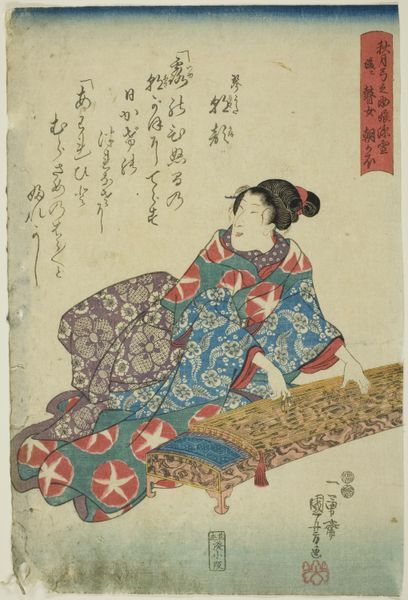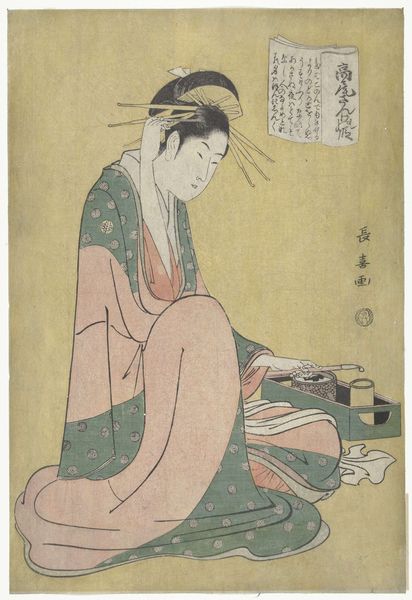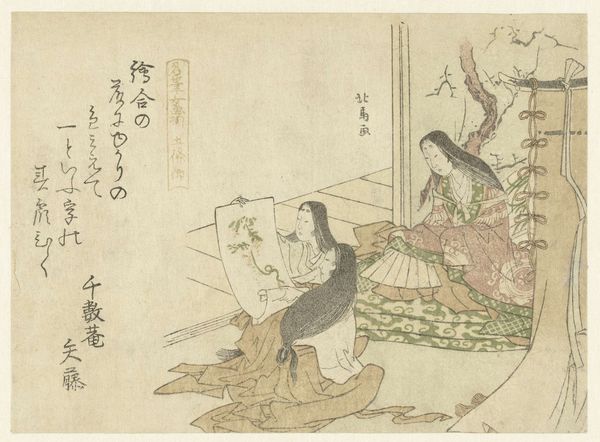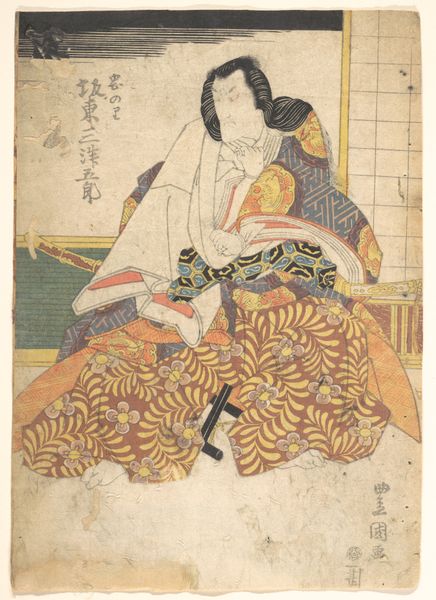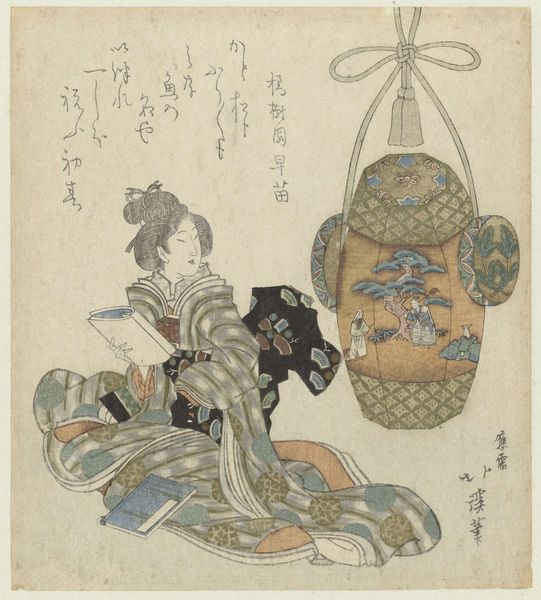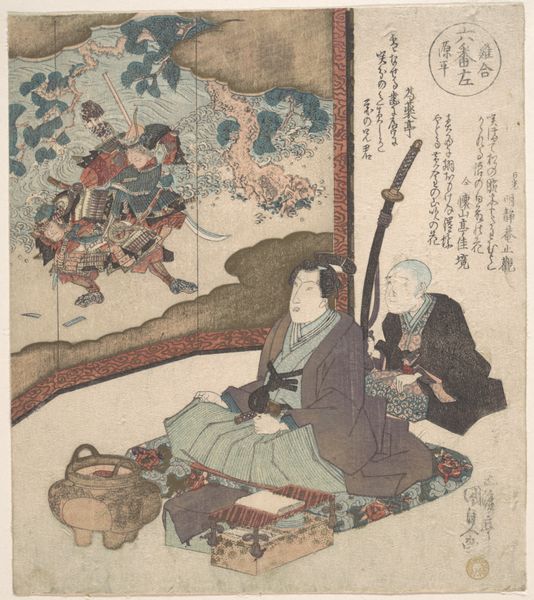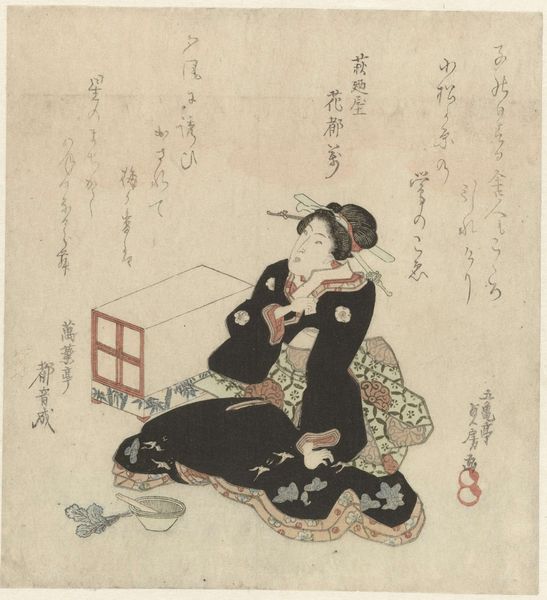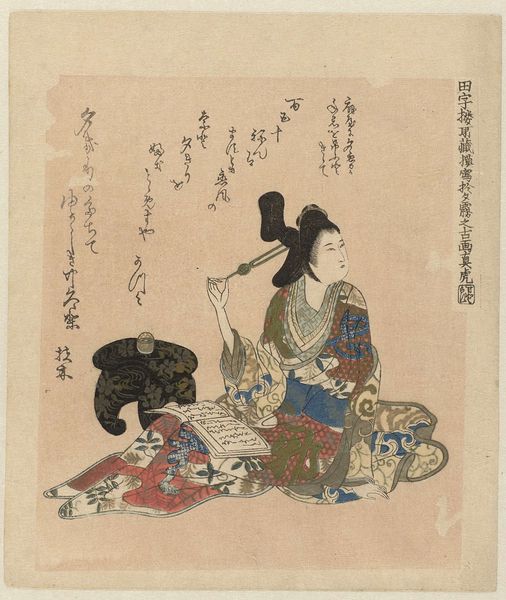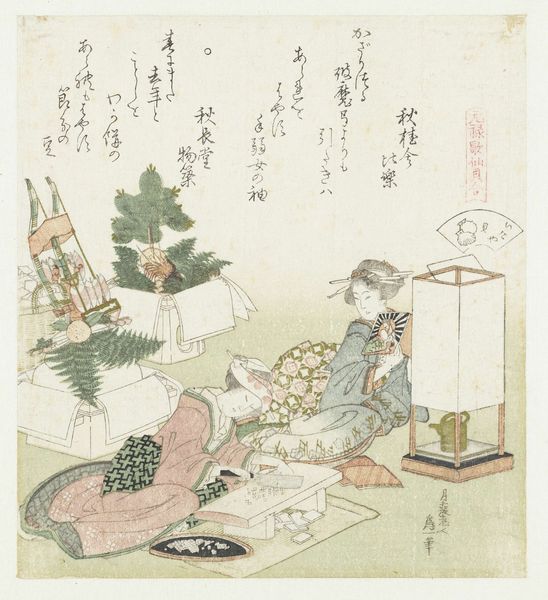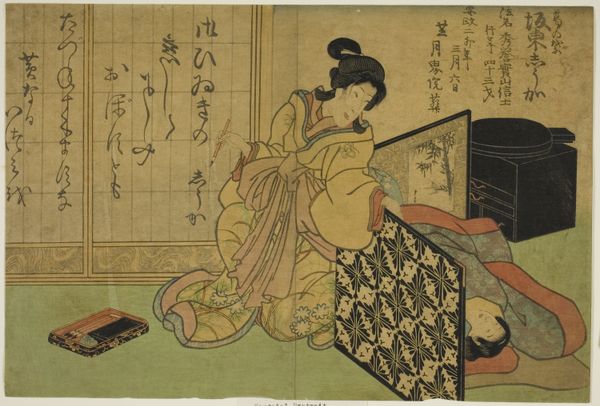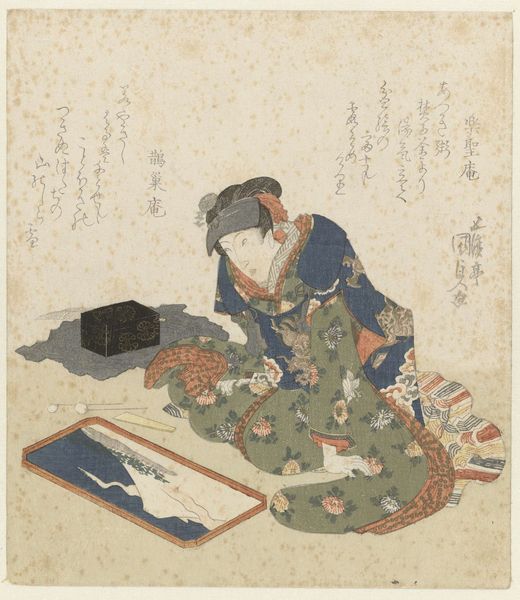
print, woodblock-print
#
narrative-art
# print
#
asian-art
#
ukiyo-e
#
figuration
#
coloured pencil
#
woodblock-print
#
line
Dimensions: height 184 mm, width 162 mm
Copyright: Rijks Museum: Open Domain
Curator: Here we have Totoya Hokkei's 1832 woodblock print, "Dragon Rising from a Fan," currently held at the Rijksmuseum. Editor: Wow, that’s whimsical! I feel like I’m peeking into a magical realism short story. The textures feel muted yet expressive, there is a lady drawing something with color pencils or makeup, a box for the colors on the carpet, a box of folded fans with one in use from where a smoke in shape of a dragon takes form and raises through the air, and I feel it has a touch of melancholy about it too. Curator: Melancholy is interesting. What resonates for me is the intersection of the quotidian, artistic work of women with traditional stories and iconography that has a social context. Think of this work not as isolated, but reflecting the broader Ukiyo-e tradition, designed and sold during the Edo period when commercial publishing was at its zenith. Editor: So it was a common item to buy and possess, mass produced even! In the piece I see an interesting, how can I explain it... not exactly tension but perhaps playfulness in mixing the concrete—this woman and her workspace with tools and materials—alongside a mystical dragon formed only in a kind of painted illusion. Curator: Precisely! And to me this hints to the blurring lines of "high" and "low" art that we understand to be so well defined and agreed, so agreed as almost an unnegotiable cultural axiom that are really the arbitrary distinctions based on class and labour which affect perception and market dynamics in culture consumption Editor: Yes, that division often misses the intricate detail and labor poured into crafts or, prints, in contrast with the precious “art objects”. In this print, Hokkei merges folklore with accessible imagery—but I want to see this print come alive, to step inside of it! What stories could be told, just like the one being told within the work by the smoke in the shape of a dragon from the lady. Curator: Absolutely. By engaging in these works in such close detail, and looking closely into materials we question these structures and hierarchies. Editor: Exactly, and allowing us a bit more imagination into how these boundaries are so very very fuzzy, that it may require to think in terms of not an imposed division of "high and low" but think, rather, on a spectrum instead of boxes, for more comprehensive explorations! Curator: Beautifully put. It prompts a deeper appreciation of material culture and its relation to the imaginary realms we co-construct.
Comments
No comments
Be the first to comment and join the conversation on the ultimate creative platform.

